I had a mild argument with a (non-AFOL) friend earlier this year. He swore blind that when he was a kid in the '70s, he only had about seven different types of LEGO® parts; all basic rectilinear bricks. He liked to build windmills. "How did the windmill turn?" I asked. He conceded that he must have also owned wheel parts.
The release of 21050 Architecture Studio in the UK this month seems to have sparked another glut of ill-researched articles spouting the same old lines that bore every AFOL that reads them to tears... or rather, to online ranting. My turn today!
Some of the most common arguments have already been partially dispelled by articles written by AFOLs who've actually researched the historical data, which is available free online to anyone. Well worth a read, if you've not already, are Andrew Sielen's analysis of the price of LEGO and just published this week, Big Sal's analysis of the proportion of sets without instructions. If you fancy dipping into the gender disparity argument, an old article by David Pickett examining girls' themes and proportions of male/female minifigs is a good place to start.
But what what I want to rant about is that common claim that LEGO has begun producing highly specialised parts and that this limits children's imaginations. One blogger, amongst other vague recollections, claimed that from the late 1970s, "each kit had special bricks that were only good for building this one thing - let’s say it was a Starfighter. Now there were special bricks for a Starfighter’s wings, and they were completely useless for building anything else". Seriously? You couldn't think of a single other use for a wedged plate? Far from limiting imagination, you could take the glass-half-full approach and argue that having more specialised parts means children's imaginations are being challenged more greatly. Using a LEGO tap as a robot leg, for example.
 |
| ©The LEGO Group 2013 |
 |
| © Vince Toulouse |
So I'm not denying that LEGO did begin making specialised parts. But they didn't start recently, nor in the late 1970s... the fact is LEGO began making specialised parts from the very beginning. I've just spent a pleasant hour or so trawling through the wonderful BrickLink catalog of LEGO parts which has been lovingly crafted by AFOLs for many, many years now. There are hundreds of parts that you could argue are highly specialised and perhaps indeed can only be used for one thing. I've selected a few that were released before I got into LEGO in the mid-1970s.
Before System in Play
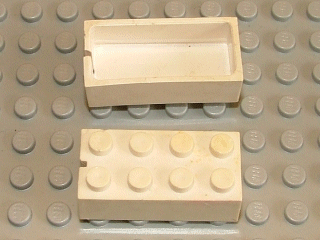 |
| ©BrickLink Ltd, supplied by patpendlego |
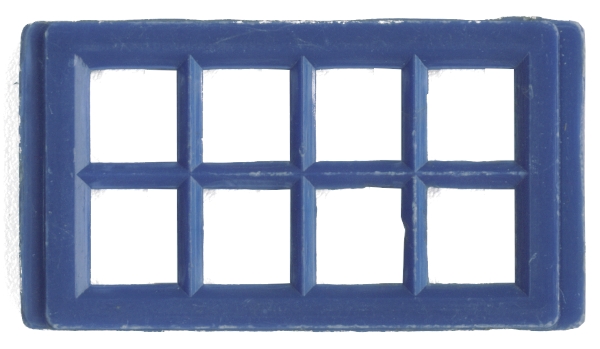 |
| ©BrickLink Ltd, supplied by TakeAbricK |
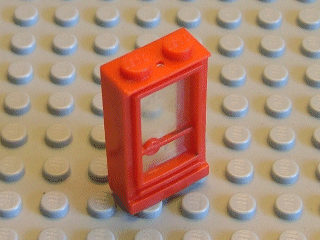 |
| ©BrickLink Ltd, supplied by patpendlego |
The Town Plan years
1955 was the first year of "System of Play"; a defining moment in the history of LEGO and indeed toymaking in that it envisaged the release of whole ranges of sets all using the same common parts. The first sets/supplementary packs built up a Town Plan with buildings made from bricks and the new phenomenon of plates. However a large number of specialised parts were also produced to make the town more realistic, fun and indeed educational for children. These included road signs, trees, gas pumps, people and of course the massive range of 1:87 scale vehicles which were made of plastic and metal and came fully assembled. Good luck using any of these for anything other than their intended purpose.
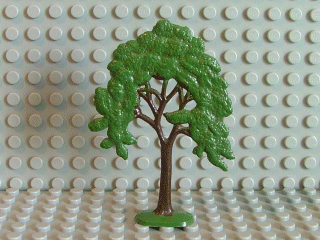 | 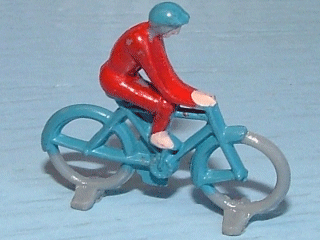 |
| ©BrickLink Ltd, supplied by patpendlego | ©BrickLink Ltd, supplied by patpendlego |
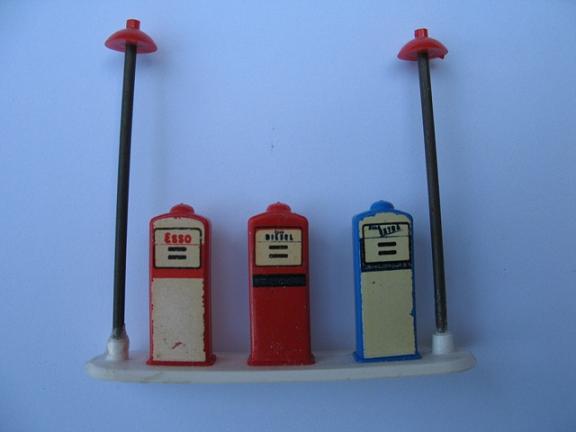 | 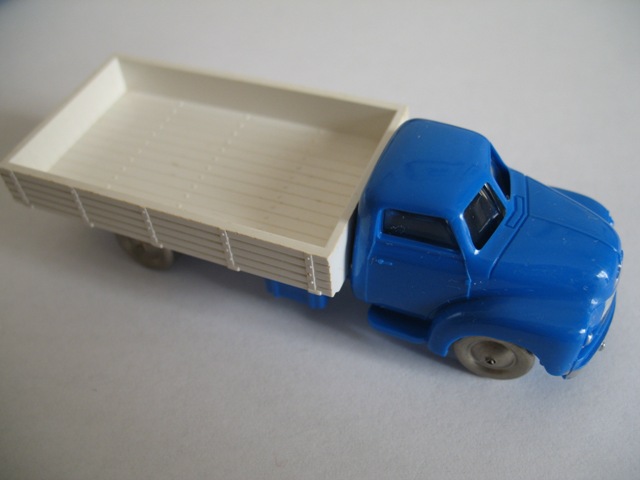 |
| ©BrickLink Ltd, supplied by TakeAbricK | ©BrickLink Ltd, supplied by TakeAbricK |
There was also a cantilevered garage door made from five very mysterious parts, and in a way you can also describe the dozens of "named beams" as being specialised parts - whilst they could double as regular bricks if you turned them around, there's no denying that having a brick with the word "Banegård" printed on it is hard to use for anything other than a Danish station sign.
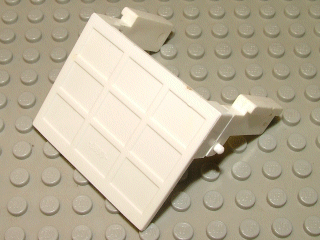 |  |
| ©BrickLink Ltd, supplied by patpendlego | ©BrickLink Ltd, supplied by TakeAbricK |
So OK... Town Plan was the early years of LEGO; they were finding their feet... perhaps once Town Plan was phased out, it was all basic bricks?
Town System and LEGOLAND theme
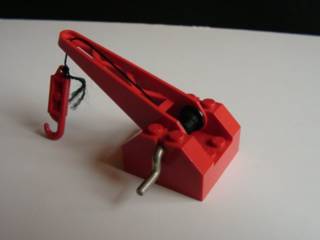 |
| ©BrickLink Ltd, supplied by Lucajuventino |
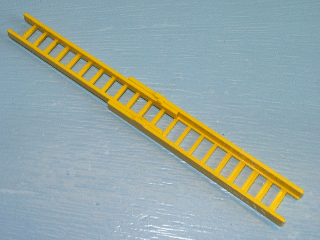 |
| ©BrickLink Ltd, supplied by patpendlego |
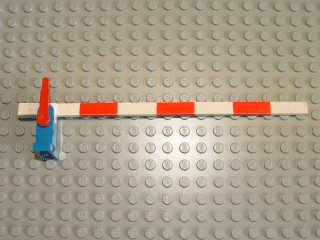 |
| ©BrickLink Ltd, supplied by patpendlego |
From 1970, sets were branded under a theme called LEGOLAND which included vehicles, buildings and boats. The inclusion of specialised elements increased.
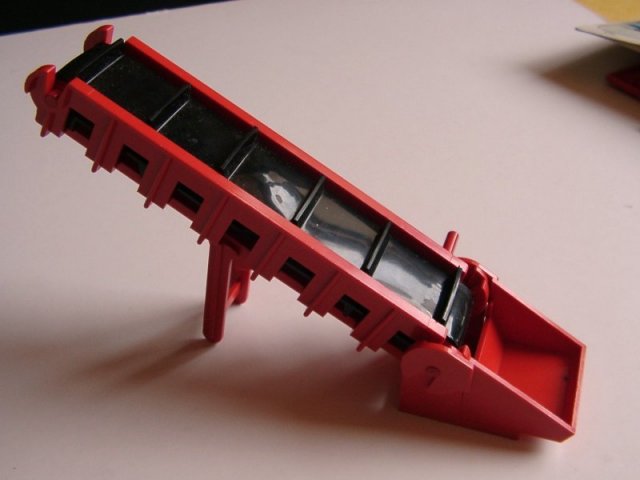 |
| ©BrickLink Ltd, supplied by Lucajuventino |
The conveyor is not an isolated incident; these next four parts are just some of the specialised parts released in 1972 alone.
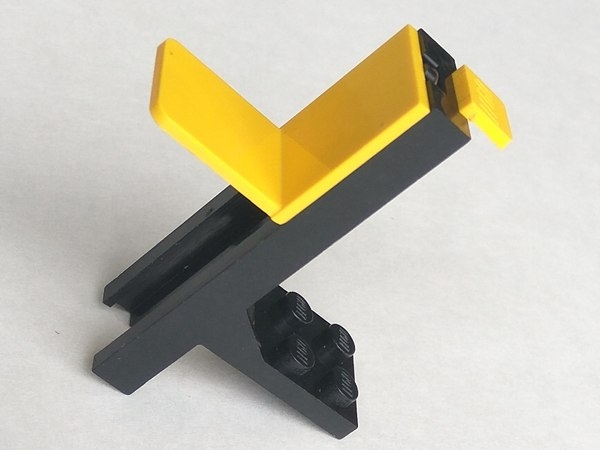 | 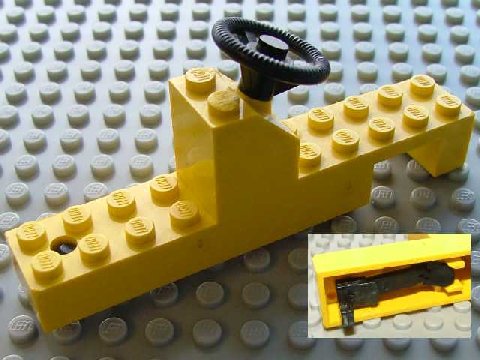 |
| ©BrickLink Ltd, supplied by phillwright | ©BrickLink Ltd, supplied by Admin |
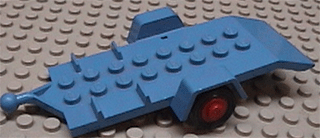 |  |
| ©BrickLink Ltd, supplied by Poohman50 | ©BrickLink Ltd, supplied by jarni |
1971 also saw the release of the first 'Homemaker' sets, a dollhouse-like theme of furniture noted for being LEGO's first attempt to create sets that specifically appeal to girls. (Yup, 40 years before the "LEGO for girls?" scandal.) So how did LEGO approach this challenge? Why, custom parts of course. Many of these are potentially useful for other purposes but there were things like the oven and this sink that are very specific elements.
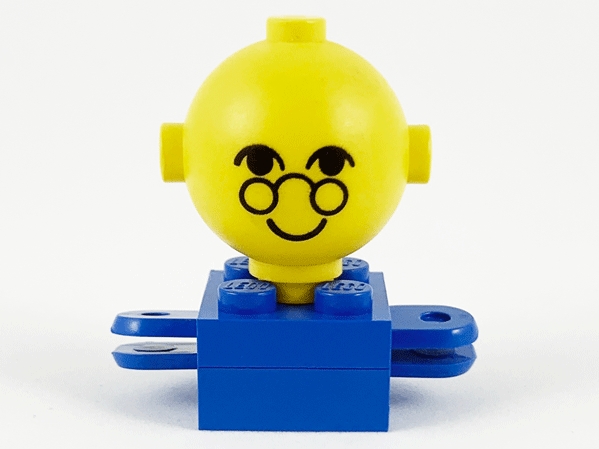 |
| ©BrickLink Ltd, supplied by Admin |
I'm stopping now. But specialised parts obviously didn't stop at any stage. So it's clear that everyone who has played with LEGO has done so at a time when specialised single-purpose parts were produced as part of the System... one could therefore conclude it's a core part of the LEGO experience. So why do people conveniently forget this?
I think it's simply down to the degree of utter brilliance of one of LEGO's core concepts: a standardised range of bricks that are easy to arrange in billions of ways. It's such a brilliant idea, so simple and so pure and so full of latent potential, that if I am getting quasi-psychological about it: it is a metaphor for childhood itself. Every one of us feels a degree of nostalgia for our lost youth, so I can totally understand why adults look at modern LEGO and feel sad that it has changed.
Well... of course it has changed. I mean what hasn't? Rocks, I guess. But the point I'm making today is that LEGO was never just that single pure concept on its own. The range always contained specialised parts to make it more fun. Yes, there's more of them now, but that doesn't necessarily directly lead to the conclusion that LEGO is less imaginative. Since Town Plan, there have always been defined sets, with instructions telling you exactly what to make and how to use the pieces. They've been targeting by gender for 43 years and pink LEGO has been around for 23 years. Really, LEGO has changed a lot less than people think. And whether it's a 2x4 brick or a stonking great boat hull... the only limit is your imagination.
If you're interested in learning more about these early decades of LEGO, I recommend purchasing Gary Istok's fascinating collation of facts, The Unofficial LEGO Sets/Parts Collectors Guide (1949-90s) as a download. It was useful with constructing this article, as were the catalogues of BrickLink and Brickset. You can buy vintage LEGO parts for your crazy creations on BrickLink and other reseller sites like Brick Owl.


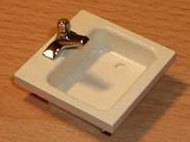
Your examples are ignoring the Juniorized movement of late, where things could be built with multiple parts but instead are not. For an example of this, look at the Juniors line with the castle, Batman, and Turtles sets where there's a big backdrop element. Jack Stone was also guilty of this. I know it's for younger builders, but the lack of imagination kills any adult interest in those sets.
ReplyDeleteI'm not denying Lego release parts that are indeed highly specialised single-purpose parts; just saying this is not a recent phenomenon. In the case of Juniors, don't throw the baby out with the bathwater... it's given us this great bow for example!
DeleteAs a father of a younger child who choose some of the Juniors, in particular the castle you mentioned, I am inclinded to disagree. Many of the parts in the set are the standard LEGO we would see, much like can be gained through the pick wall or older bucket boxes. The big walls are an exception for this and frustrated me at first as well, however my son, and many of is friends, struggle with interlocking techniques for making walls. We have built many times together but he always wants to make towers instead of brick laying. These larger walls keep his model strong, increase his interrest in play and rebuilding, and ingeniously LEGO has the interlocking building included for some of the other components helping him see it in action.
DeleteJust have to look for the silver lining I guess sometimes.
Sorry, I now realise the OP was discussing POOP parts. Indeed they're less likely to be used by older children or adults but they serve a need, as the poster above points out well. However they can be great timesaving devices for us all... although I could build this part out of many parts, it still interests me and would be useful if I needed to build a large area of 2-high plates. If I built such an shape from regular plates there'd likely be that unfortunate warped effect that plagues Architecture sets.
DeleteThe POOP parts like the car bodies are definitely not likely to be used by adults but when you have 3/4 yr olds desperate to play with grown up Lego (as my 4yr old son calls it) and you don't want to spend 1/2 your life remaking the cars or buildings, these junior sets are fantastic. If these junior sets stifle creativity, what does Duplo do?
DeleteI also have a creator bucket for them which they love too and generally build towers with the bricks but ask for me to build characters for them too. I even sat and made mosaics and pictures with my 3 yr old.
Some specialised parts are great and make for fantastic looking models but their use outside of certain constructions, I would agree, is limited. The boat hull is a fantastic example of limited but not entirely useless POOP parts. Arguably fences and windows are fairly limited in their use but I've seen some great uses for these parts.
I can relate to this article as I had tonnes of pre-1980 Lego as a kid and there was plenty of parts that I hardly used like winders for rope/string, crane claws and the likes.
Fantastic article caperberry, as always.
Well, Anonymous, I think your point about the Junior set is exactly on target. Lego is not for kids. Any attempt at making it easier for them to build, is a waste of time and plastic. But it is not just Lego Juniors that are too simple, have you seen Duplo? No? I didn't think so, because those are just giant blocks that could easily be replaced by a stack of any basic Lego brick. Children should receive no help from adults; they are already trying to steal our future as if it belonged to them. I agree with you whole-heartedly and think that like alcohol and tobacco and fire arms, the government needs to do all it can to keep Lego blocks out of the hands of children.
DeleteJosh G. that is some professional level sarcasm right there. I love it.
Delete"One blogger, amongst other vague recollections, claimed that from the late 1970s, "each kit had special bricks that were only good for building this one thing - let’s say it was a Starfighter. Now there were special bricks for a Starfighter’s wings, and they were completely useless for building anything else"."
ReplyDeleteHaha, did you by any chance also come across that in the comments section of one of the Guardian articles? I was this close to asking him how he managed to build cars with his friends without 'special' wheel pieces...
Indeed that is where I found it...wanted to reply also, but Medium doesn't seem to include commenting ability. The odds of him only ever owning Lego sets that came with no picture on the box must be astronomical ;O)
DeleteI don't see a wheel. Or...three more wheels.
DeleteJust a quick note to say that to avoid being lawyered, I've changed the name and address of my blog to bigsalsbrickblog.com. So the post is now at: http://bigsalsbrickblog.blogspot.co.uk/2014/08/it-was-all-basic-bricks-in-my-day-part.html. Sorry for any inconvenience!
DeleteAnd your old Space blog? Is it gone now?
DeleteWow, didn't think anyone would miss that one! It's here: http://bigsalsspaceblog.blogspot.co.uk/
DeleteMedium is a bit different: they support annotations tied to specific paragraphs of the original article.
DeleteSmashing! I totally agree with your comments. Sometimes when I am bored or frustrated with a build I will get out one of the big lumps and try to build it into something completely different. It's challenging and fun and often leads to new building ideas and techniques.
ReplyDeleteGood post. It drives me crazy how AFOLs are always complaining about something, whether it's specialized parts that supposedly limit creativity, or LEGO supposedly stealing projects off IDEAS. For Junior sets, it's good that they're using POOP parts. I once helped a five year old build a set(5-12), and he needed ALOT of help. I would have bought a junior set for him, but they weren't out yet.
ReplyDeleteIn my 10+ years involved with MichLUG, and after having displayed at over 100 shows, I have had _ONE_ person come up to me in November of either 2012 or 2013 and complain that in his day the bricks were all basic and nowadays they're all too specialized. My answer was to point out that the 40+ cars I had on our layout were all physically impossible to build prior to 2004 with the introduction of the wonderful cheese wedge. Before the double-cheese came out, one of my designs used a total of 42 cheeses on a 6-wide body. He kinda shut up about it after that.
ReplyDeleteStill, that's not the weirdest complaint I've ever gotten. This year at Brickworld Indy, I had an older woman come up to my display and (not sure if addressed specifically to me, or just thinking out loud), almost in tears, said she couldn't understand how someone could bring all these toys to show off to kids who would want to play with them, but tell them they couldn't. I was completely at a loss for words at the time and was unable to respond.
Well it's no different at an auto show. 100 cool looking cars that you can't get into or touch, let alone drive.
DeleteBut at an auto show, the cars are generally there for adult men (who understand how expensive a scratch or a broken antenna could be) to drool over. LEGO shows, and particularly LEGO-only shows, are aimed directly at kids. The majority of them understand it's a "look with your eyes, not with your hands" situation, but this woman seemed to think that all kids will come in expecting it to be a giant play session. One important detail I left out is that I don't remember seeing any kids tagging along behind her, so this was probably a new experience for her.
DeleteThank you for this hilarious read :D
ReplyDeleteThat use of the boat hull is incredible! It certainly puts builders like myself to shame.
ReplyDeleteI think that the idea that "In my days it was just basic bricks! And no instructions!" is partly due to the memory-cleansing maelstrom of time - or whatever it should be called.
ReplyDeleteAs you note in the article, the conveyer-belt broke. I have a lot of unusable parts of conveyer-belts, and I would guess that more agressively cleaning parents would have thrown the broken pieces away. Thus the conveyer-belt, the winch, the forklift and the turning wheels slowly disappeared from the collection. But the basic bricks - they seldom broke, and seemed (and still seems) to multiply when left alone. The instructions were printed on single sheets of paper - maybe they got torn, maybe they were put in a binder, that got lost in a move or dissappeared somewhere in the attic - and thus you gradually had a larger and larger collection of basic bricks without instructions!
When I was a kid in the 1970s and 1980s, I never wished for boxes of basic bricks (I had family that worked for LEGO, so I had plenty of 2x4 bricks available to me) but always enjoyed perusing the catalogs for new bricks, and fondly remember the headlight-brick, the hinge-bricks, and everything space-related! It was so cool to see new kinds of bricks, but I never thought of them as being too specialized, rather they helped me build new stuff that I hadn't even fantasized about before seeing the possibilities.
When I emerged from my dark age, I bought a retired collection of sets from the mid-1990s, and was "shocked" to see all the specialized bricks they used, that I didn't have as a child. When I started buying newer sets I realised that a lot of the special bricks, i.e. wheels and car bases, have changed every ten years or so - so that whatever you were using as a child, and considered "normal" bricks, have since been replaced by different kinds of "normal" bricks to the kids of today.
So believe you me - in 20 years we will still hear: "Oh my, I remember my childhood back in the 2010s, back then LEGO were just basic bricks, and you could build anything from them! Not like the specialized sets nowadays!"
I also used to just sit and stare at the catalogs and catalog one-sheets for the next year's sets just looking for whatever cool new parts I hadn't seen before. Worse yet, when I was in high school, I built a Blacktron rocket sled (still have it) that used pretty much all of the coolest special parts from both the Battrax and the Invader (the only two real-Blacktron sets I was ever able to get my hands on as a kid).
DeleteAs for the updating of wheels and such, I've noticed that they have finally shifted away from making one-and-done tread patterns for the tires on a lot of vehicles (old Technic and Model Builder sets were lousy for this), and now there are a few tread patterns that have come out in a wide array of tire sizes. One of the cool results of this is that you can now combine two different size tires on the same vehicle, and it looks like they were meant to go together.
BTW, I could easily put the Banegård brick in a MOC that has nothing to do with Banegård. All you have to do is flip it around so the unprinted side shows. I was actually planning to do that with the pile of Knight Bus 2x4's that I was slowly collecting when the inventory of dark-purple 2x4 bricks dried up on Bricklink, but then they too vanished...and then the plain ones came back.
ReplyDeleteThanks for making this Article Caper, it was very informative and if I ever need to educate someone about this topic, the information I learned here will be super useful. It was also an entertaining read. Keep up the great work. :D
ReplyDeleteThanks for sharing this informative blog with us. Your blog is very nice and helpful for children’s education. I am totally agree with your thoughts.
ReplyDelete"When I was a kid, it was all just basic bricks!". There is one thing that is more annoying to hear than that: "When I was a kid, it was all just basic legos!".
ReplyDeleteGreat article. Even when I was a child in the 80s I preferred the more specialised space bricks, and have only once ever bought a selection of basic bricks. I used to love making droids, and the basic bricks just didn't give enough options. If the new Mixels small-scale ball and sockets joints were around then, that would have been amazing!
ReplyDeleteJournalists, eh?
Great article. I have had this discussion quite a few times and it is nice that now I can just point them here. Whenever someone brings up the lack of imagination, I usually just overwhelm them with examples of how they are wrong.
ReplyDeleteAwesome article, thanks for writing this. People have no idea how irritating it is to listen to them complain about a problem that doesn't actually exist, simply because they refuse to take off their rose-colored nostalgia glasses. If it's not "specialized bricks", then it's licensed properties (Star Wars SAVED the damn company), or how expensive they are (because they're super high quality!), or whatever else they for some reason feel the reason to voice an ignorant opinion on, even though they haven't bought a set in decades.
ReplyDeleteBionicle was more instrumental in saving the company than Star Wars. With SW, they found that they had a problem moving product during the gap years, but it would sell like gangbusters when there was a movie in theaters. Once Clone Wars got going, that actually helped keep the line running strong for several years, but Bionicle sold so well that they had to install a new production line to keep up with the demand for parts, and they paid for it by bumping the price of the original Toa sets by $1 per set.
DeleteThat said, I do remember that sometime 2001-2002-ish, Bionicle was the top seller, I think SW was second, either City or Creator was third, and Harry Potter was fourth.
SW sustained the company for a bit longer, but due to hefty licensing fees from Lucasfilm they had to think of something else... Bionicle!
DeleteOh thanks for the correction! I either had bad info or I misremembered my facts, I guess I am the ignorant one. I knew Bionicle was a big hit (I certainly did my part to help!), but I don't think I knew it was that instrumental in rescuing the company. Do you know if the licensing fees are still an issue to this day? I imagine right now almost all of the fees are paid to Disney since they own the rights to all the current franchises being used for Lego sets, except for DC I think. I would think that's helped Lego a lot, but I don't know for sure. Either way, I imagine those licensed sets are a big help in sales, and even if they do stifle creativity (I personally think they do NOT), it's likely they're a necessity for Lego to continue producing at this point.
DeleteDC is owned by Warner Bros.
DeleteBtw, part 2 of this series is now up at Sal's blog.
License fees aren't as big a deal as people make out, at least not with the lines that are successful (primarily Star Wars and Superheroes, both of which have been declared "evergreen" themes that will stay in production year after year, rather than taking a hiatus like Harry Potter did). Licenses are typically flat fees, so the better the line sells, the less it costs per set in the long term. Exceptions are cases, like Hasbro with Lucasfilm, where the licensor gets stock options for the licensee, but The LEGO Company famously does not sell stock outside the family.
DeleteAs for who owns the licensed themes, WB owns DC Superheroes, Lord of the Rings, Hobbit, and (not currently active, but still under license AFAIK) Harry Potter (expect a return when the creature features hit theaters). Disney owns Disney Princesses (obviously), Star Wars (which, given a certain recent announcement, gives the option of seeing a Star Wars Friends-style Disney Princess set someday), Marvel Superheroes, a Disney Duplo theme, and several themes that are not in current production (PotC, Toy Story, and Cars that I can think of). Nickelodeon owns TMNT outright these days, which covers both the Nick TMNT sets, and the Michael Bay Hates Your Childhood TANT sets. Believe it or not, Architecture is technically a licensed theme as, in most cases, whoever owns the building owns the rights to produce replicas of it for profit. Fox owns Simpsons. Universal owns Back to the Future, and I can't recall who owns Ghostbusters offhand. Minecraft is owned by some non-TV/Movie company. I think that's all the current licensed properties right now, but as you can see, while Disney currently owns the lion's share of licensed properties going back over the last fifteen years, they are actually tied with WB right now.
Basic info about the "creature feature":
Deletehttps://en.wikipedia.org/wiki/Fantastic_Beasts_and_Where_to_Find_Them
And yeah, betting on a new series is not a high-risk wager.
The Ghostbusters films were released on Columbia, so I guess the license is owned by Sony.
The Minecraft license seems to still be running under Mojang, creator Markus Persson's own Swedish company.
Btw, I own a bunch of bricks, bought second hand in Sweden, with those side slots, but general tube connections below. They seem to come in the colors white, blue, red and yellow, but strangely not in black. I'm curious on where they come from, if it would be some early clone brand. There's no "Lego" marks to be found, and quality feels quite low.
ReplyDeleteWhat is interesting about Lego's development has always been the retention of the same two or three connecting devices, despite the variegation of pieces. The meshing of different aesthetics, defined by specialised pieces, via universal components is at the heart of what makes Lego tick.
ReplyDeleteYou can think of it in terms of arguments about freedom and creativity. Often we think of freedom from a personal perspective: that I have a free will and can build whatever I like. The idea of a free system is something else. What make a system free in a profound sense is the ability to connect with other systems. As such there is no such thing as absolute freedom, but certain systems allow migration from themselves to others. Lego has the profound type of freedom at the core of its experience. Specialised pieces, say for instances the rockets and trans-yellow wind shields of classic space, define a given theme or way of building. As long as this system has universal connectives (studs mainly) each aesthetic system can interact with another. From this thesis you get possibilities like spastle (space-castle hybridity. Even more importantly, you get to meld technic and mindstorms with fabuland and duplo.
The innovation of specialised pieces dimly signifies the development of new and differing systems. There have always been themes, some like the homemaker sets have been largely forgotten, but their ability to cross-pollinate remains. That what makes Lego so open to creative potential.
What is interesting about Lego's development has always been the retention of the same two or three connecting devices, despite the variegation of pieces. The meshing of different aesthetics, defined by specialised pieces, via universal components is at the heart of what makes Lego tick.
ReplyDeleteYou can think of it in terms of arguments about freedom and creativity. Often we think of freedom from a personal perspective: that I have a free will and can build whatever I like. The idea of a free system is something else. What make a system free in a profound sense is the ability to connect with other systems. As such there is no such thing as absolute freedom, but certain systems allow migration from themselves to others. Lego has the profound type of freedom at the core of its experience. Specialised pieces, say for instances the rockets and trans-yellow wind shields of classic space, define a given theme or way of building. As long as this system has universal connectives (studs mainly) each aesthetic system can interact with another. From this thesis you get possibilities like spastle (space-castle hybridity). Even more importantly, you get to meld technic and mindstorms with fabuland and duplo.
The innovation of specialised pieces simply signifies the development of new and differing systems. There have always been themes, some like the homemaker sets have been largely forgotten, but their ability to cross-pollinate remains. That is what makes Lego so open to creative potential.
May I add something? I always looked at funky specialized parts and said, "Hey, that looks like a...", and then I would build an MOC around it.
ReplyDelete